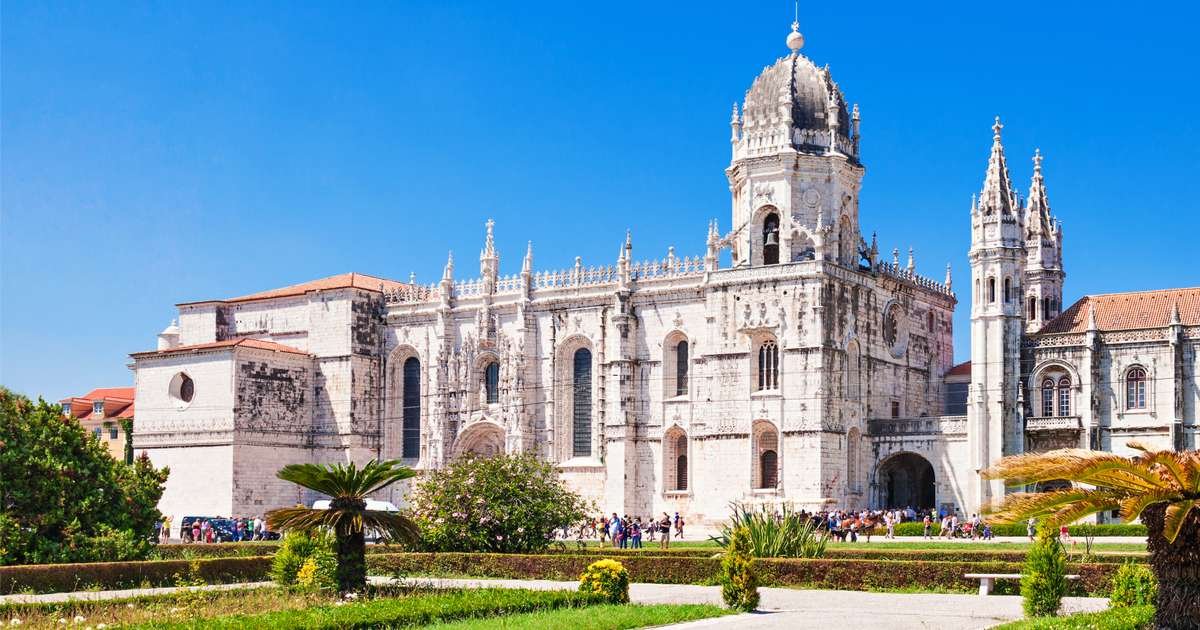Portugal’s history and its powerful past are deeply intertwined with the Catholic Church.
The church and the royal family were behind the discoveries and exponential growth of the country over many centuries.
While today, it welcomes all people and all religions, the city remains scattered with monasteries, convents and churches which remind visitors of its catholic history.
In this article, we have chosen the Top Religious Sites in Lisbon for you to visit and explore. Each location provides a different look at chapters of the past, with some sites having survived the massive earthquake of 1755 with others arriving after or enduring expensive renovations. Each is sure to impress with their unique design and characteristics.
Below you will find a brief overview of each.
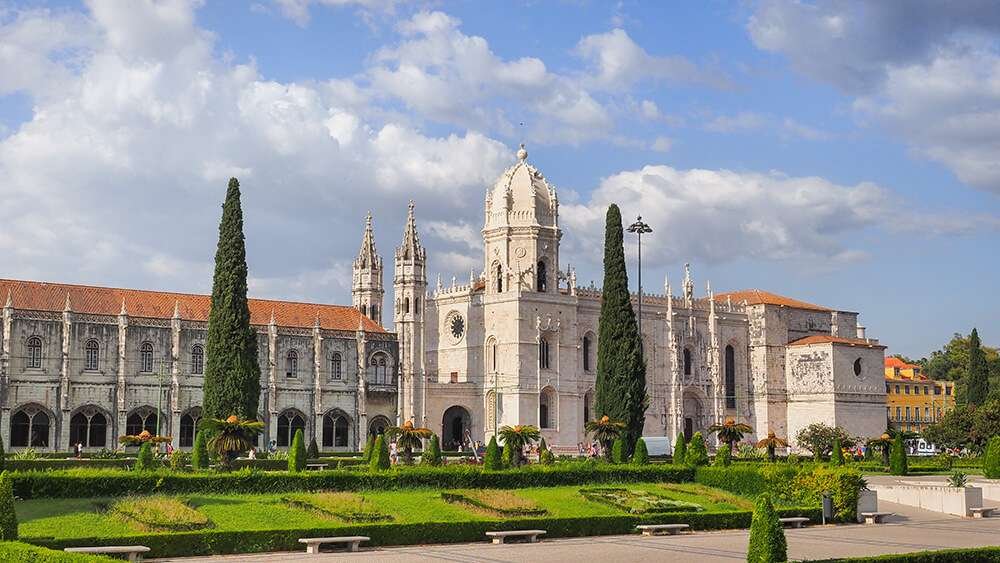
1. Jerónimos Monastery
By far one of the most popular and important religious sites in Portugal, the Jerónimos Monastery wows visitors with its remarkable Manueline architecture. A staple in the pages of Portugal’s history, it was built at the end of the 15th century to celebrate Vasco da Gama’s successful voyage to India, a world changing event during the Age of Discovery. Da Gama has been eternally honored here with an elaborately carved tomb which compliments the design of the monastery.
The Jerónimos Monastery was given the pope’s blessing and King Manuel I gave the monastery to the Order of St. Jeronimo, which is where it takes its name from. The monks were required to pray daily for the ruling royal family, Henry the Navigator and all sea voyages commissioned by the country.
An unexpected discovery which came from the monastery was the invention of Pastel de Nata, Portugal's beloved dessert.
Useful Information:
- Address: Praça do Império 1400-206 Lisboa
- Check out the 3-Day Itinerary in Lisbon to discover more attractions around the monastery.
Popular Ticket Options:
- Ticket Overview for Jerónimos Monastery
- Tickets for Jerónimos Monastery
- Combo Ticket: Jerónimos Monastery + Belém Tower + National Palace of Pena
- Classic Lisbon Combo: Sao Jorge Castle + Belém Tower + Jerónimos Monastery Tickets (Recommended)
- Combo Ticket: SL Benfica Stadium and Museum Tour + Mosteiro dos Jerónimos (Bestseller)
- Combo Ticket: Jerónimos Monastery + Navy Planetarium
- Lisboa Card 50+ attractions + Public transport
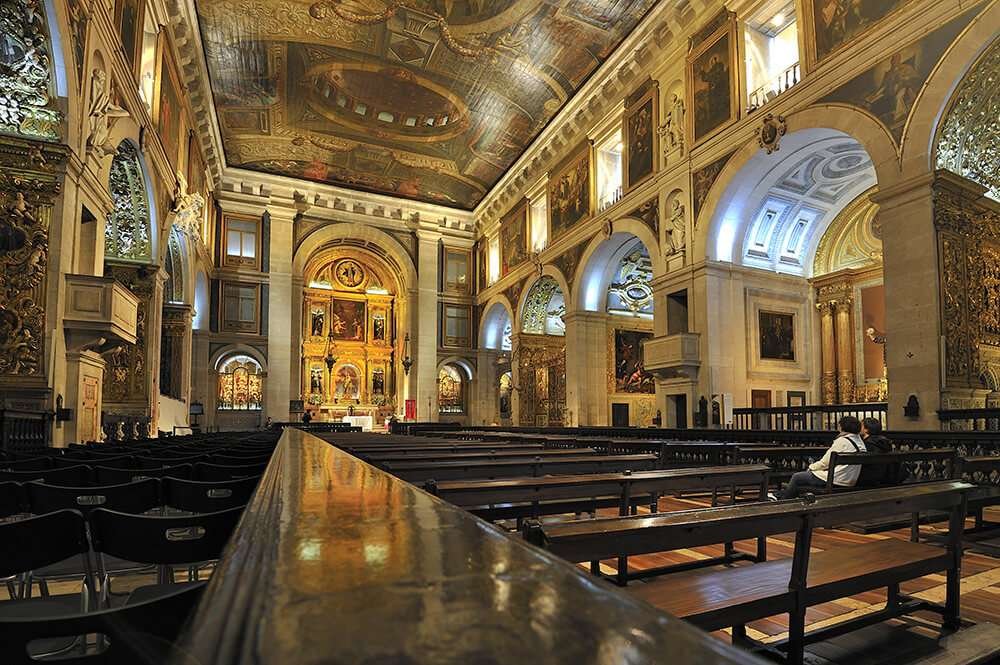
2. São Roque Church
Located in the center of the vibrant neighborhood of Bairro Alto, São Roque Church is easy to miss. However, step inside the 16th century Jesuit church and you will be left in awe before the beautiful decorations. Eight chapels, gold gilding and sacred art make it a wonder for visitors.
One of the earliest Jesuit churches in the world and the first in Portugal, the outside of the church can be misleading as its simplicity is no indicator of the lavish decor inside. From the marbled floors to the Apocalyptic ceiling painting, there is much to see in this Mannerist and Baroque styled church.
Useful Information:
- Address: Largo Trindade Coelho, 1200-470 Lisboa
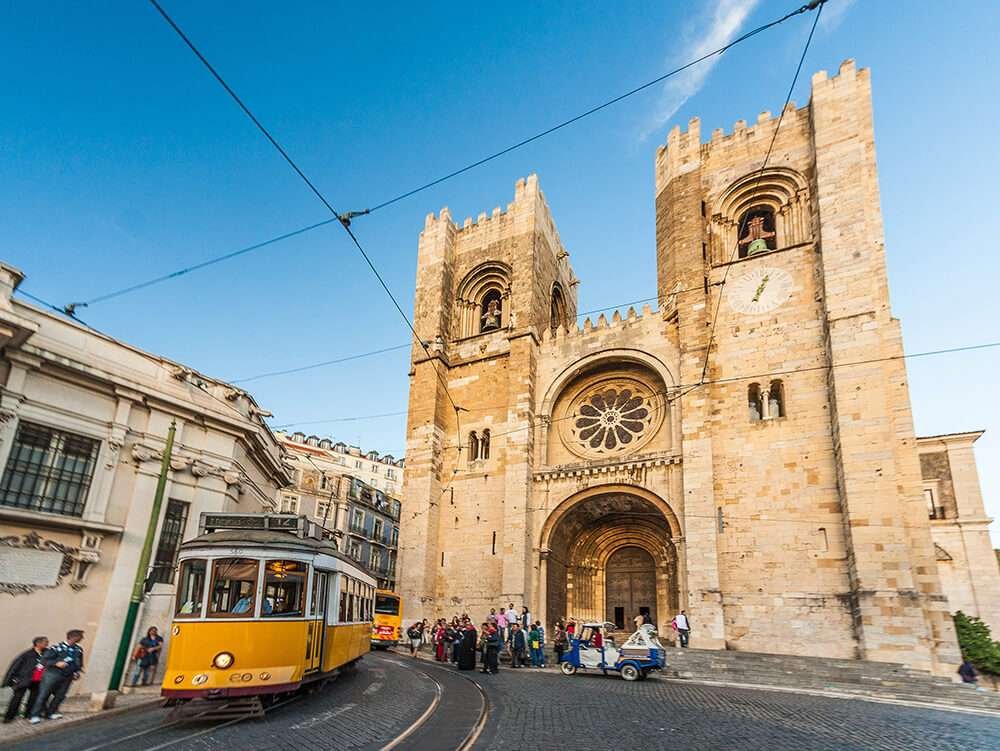
3. Lisbon Cathedral
Lisbon’s oldest and most important religious site, the Romanesque Sé Cathedral, was first constructed in the 12th century. After extensive excavation work in the cloister, archeologists discovered it was once the site of a mosque from the era when the Moors ruled the Iberian Peninsula. In the courtyard archeologists found evidence of a Roman road and the shops which lined it.
Like many structures in the city, the Lisbon Cathedral was hit hard by the earthquake of 1755 as well as other natural disasters. The accumulated damage resulted in a blending of architectural styles, which incorporates Baroque, gothic, neoclassical and rococo. Today it is listed as a national monument.
Useful Information:
- Address: Largo da Sé, 1100-585 Lisboa
- Lisbon Cathedral and other historic must-see spots are included in the Day Guide to Alfama
- Get your ticket for Lisbon Cathedral (Sé de Lisboa) in advance here!
4. Cardaes Convent
The Cardaes Convent is one of the less touristic religious sites in Lisbon, despite its impressive interior. Founded in the 16th century by high ranking women in the noble class, it is richly decorated and has one of the most stunning works of gilded wood carving in the city.
Unlike other structures in Lisbon, it was able to survive the destructive earthquake and therefore now serves as an incredible example of Baroque and rococo decor. The walls are covered in incredible panels of Portuguese and Dutch tiling, with much work coming from Amsterdam’s most popular artist of the time, Jan van Oort.
Useful Information:
- Address: Rua de O Século 123, 1200-434 Lisboa
With so many historic buildings in the city, booking a night's stay in a convent is an unforgettable experience. Check out our full list of Lisbon's top historic hotels.
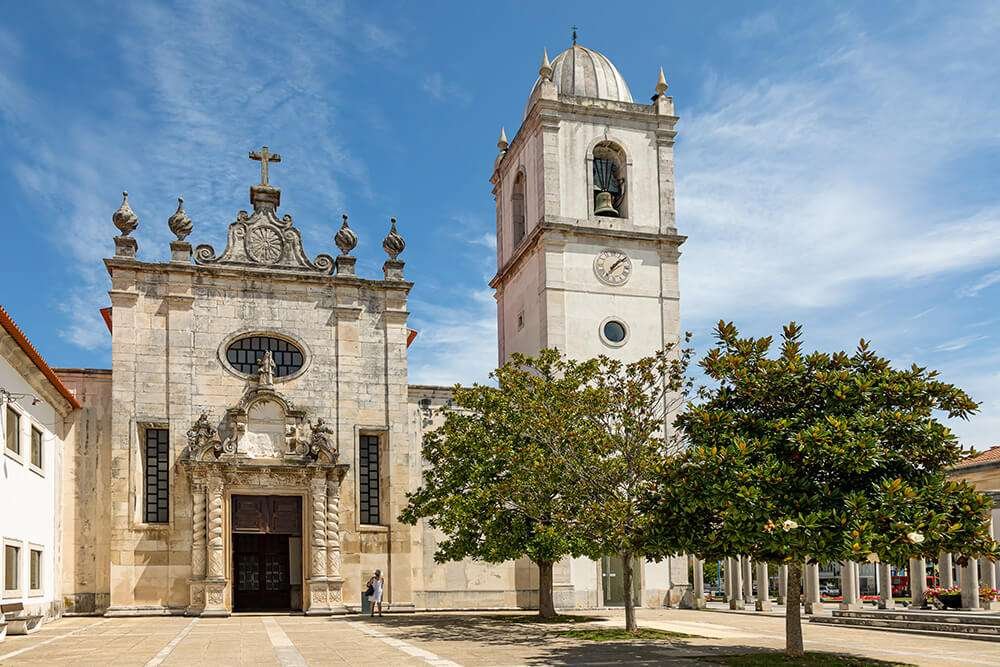
5. São Domingos Church
Built in the mid 13th century, the church of São Domingos is now a national monument. When first constructed it was one of the largest churches in Portugal and was used primarily for the royal weddings.
What makes São Domingos church particularly unique is the amount of damage it has been able to survive. Apart from two catastrophic earthquakes, it has also been the victim of multiple life taking fires. Inside the church you will discover pillars with burn marks and an interior that some claim still reeks of smoke despite decades having passed. In combination with the charred walls are sacrificial paintings and sculptures, all contributing to create somewhat of a haunting persona.
The church of São Domingos has become the main house of worship for the African community in Lisbon. Migrating from Portugal’s ex-colonies, the congregation has been assisted here by a priest who also has re-settled and who offers assistance to new arrivals.
Useful Information:
- Address: Largo São Domingos, 1150-320 Lisboa

6. National Pantheon
The National Pantheon is the final resting point of many significant Portuguese figures. The 17th century church took more than 300 years to build and its construction defied a curse which predicted the building would never be completed.
Respected as the first Baroque monument in Portugal, the interior is beautifully decorated but not to traditional standards. Instead of azulejo tiles and gold detailing it has been adorned with colored marble, stonework floors and symmetrical patterned detailing inspired by the Roman St. Peter’s Basilica . The viewpoints from the location are fantastic and allow visitors to see as far as the Vasco da Gama Bridge.
Useful Information
- Address: Campo de Santa Clara, 1100-471 Lisboa
Popular Ticket Options:
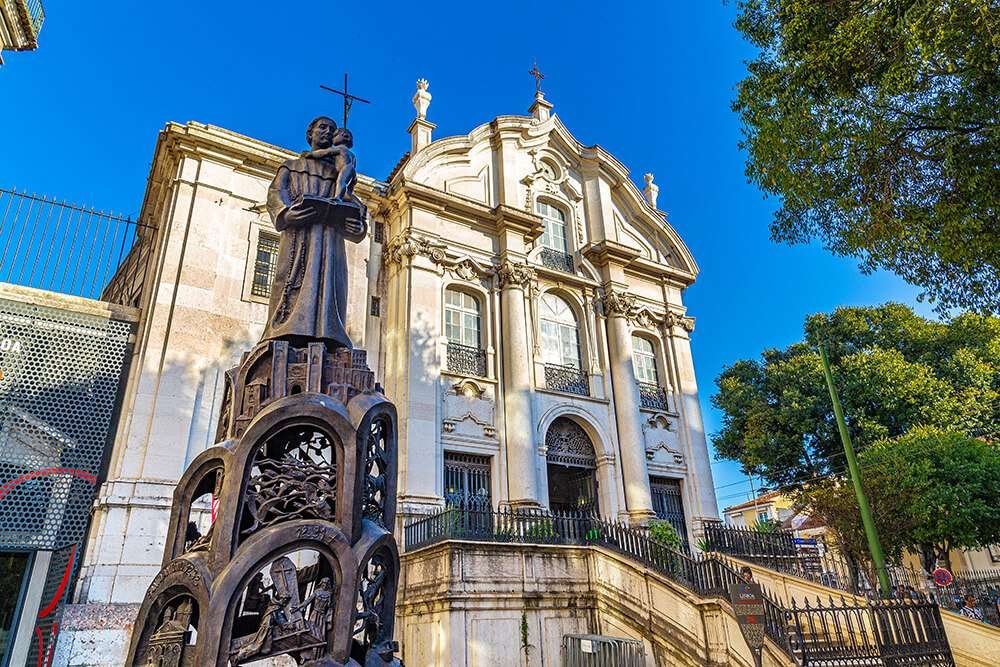
7. Santo Antônio Church
The Church of Santo Antônio, or Saint Anthony is a national monument dedicated to the patron saint of lost items and love. The Roman Catholic church is believed to have been built on the site where Anthony was born in 1195 with an underground chapel that marks the exact spot. The inside is dedicated to the saint's life, depicting different events through art, statues and tile work.
Outside the church a statue of Saint Anthony stands proudly before his church and welcomes people to engage in a fun tradition. The legend of the saint claims that if you can throw a coin at the statue of Saint Anthony and successfully have it land on his book a new love partner will enter your life.
Useful Information:
- Address: Largo de Santo António da Sé
→ Located in the neighborhood are some of Lisbon's best restaurants and cafes. Read our guide on the top Portuguese foods to try and know what to order when you sit down.
8. Convent of Madre de Deus
The convent of Madre de Deus is known for housing the National Museum of the Azulejo. While many visit to view the tiles, this National Monument Convent is not any less impressive.
The opulent wealth of the convent is a testament to the power and prestige the Cathoilic church held in Portugal's past. Founded at the start of the 16th century, it was at first incorporated into a larger convent before coming to stand as its own. The rebuilding which was dedicated to it after the almost total destruction in the earthquake resulted in the decorative treasures you find today.
Useful Information:
- Address: R. Me. Deus 4, 1900-312 Lisboa
- Want to learn more about the National Tile Museum? We have created a complete list of Lisbon's most popular museums.
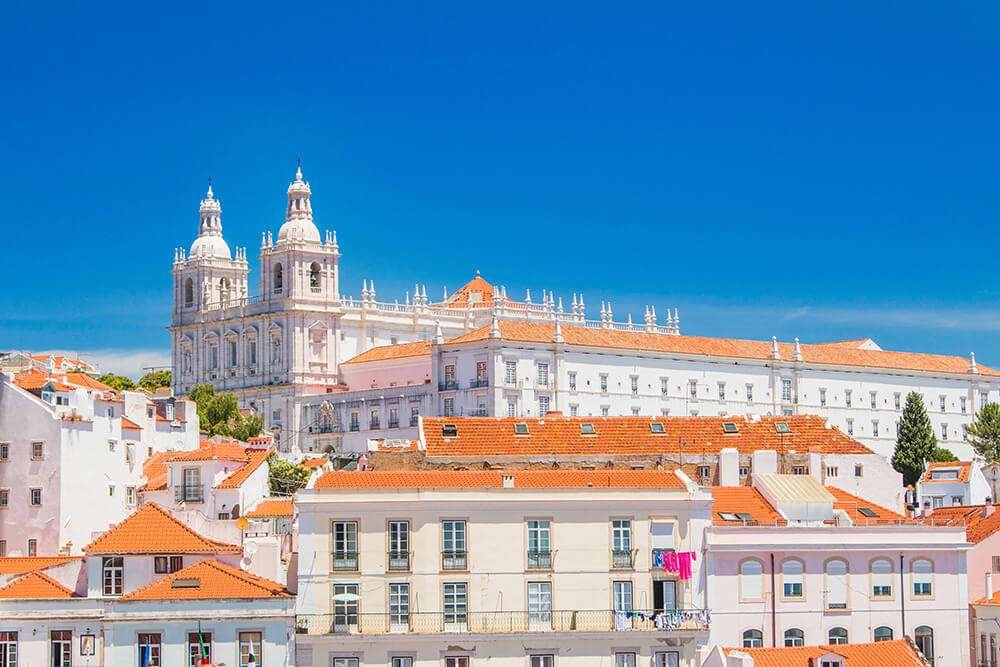
9. São Vicente de Fora Church
The late Renaissance São Vicente de Fora church is dedicated to Lisbon’s patron saint, Vincent of Saragossa. Its name translates to Saint Vincent on the Outside, and was erected as a promise by the first king to build monasteries on grounds where crusaders were buried.
The interior decoration of São Vicente de Fora consists of beautiful works of polychromatic marble, azulejo covered cloisters, tiled murals, painted ceilings and sculptures completed by famous Portuguese artists. It has the reputation as the monastery with the most extensive Baroque tile collection in the world.
The monastery holds the pantheon of the monarchs of the House of Braganza, the family dynasty which ruled Portugal for 250 years. The art which decorates the inside of the monastery has served as an example of religious art and architecture for future churches within Portuguese territory.
Useful Information:
- Address: Largo de São Vicente, 1100-572 Lisboa
- Take a self guided audio tour of the historic locations in Lisbon and dive into the city's fascinating past.

10. Carmo Convent
Once one of the grandest churches in Lisbon, the Carmo Convent now stands in half ruins after barely surviving the great earthquake of 1755. The tragedy, which took place on All Saint's Day, brought the roof of the convent tumbling down, crushing the worshippers within. What remains almost three centuries later is the skeleton structure of the convent with an unobstructed view of the sky.
Construction was started in the late 14th century and was dedicated to the Carmelite Order who used it for religious purposes and an impressively sized library. Centuries later, in the 1970s, it was the site of a political standoff during the Carnation Revolution. Today in includes a great archeological museum with azulejo tiled walls.
To see the convent from a different perspective, head to the viewing deck of the Santa Justa Lift, located just a few minutes walk behind the convent.
Useful Information:
- Address: Largo do Carmo, 1200-092 Lisboa
- The Carmo Convent is part of this ultimate 3-Day Lisbon Itinerary along with a list of other not-to-be-missed sites.
- Tip: The best way to experience the beauty of the Carmo Convent is during the "Lisbon under the stars" event. Get your tickets in advance!
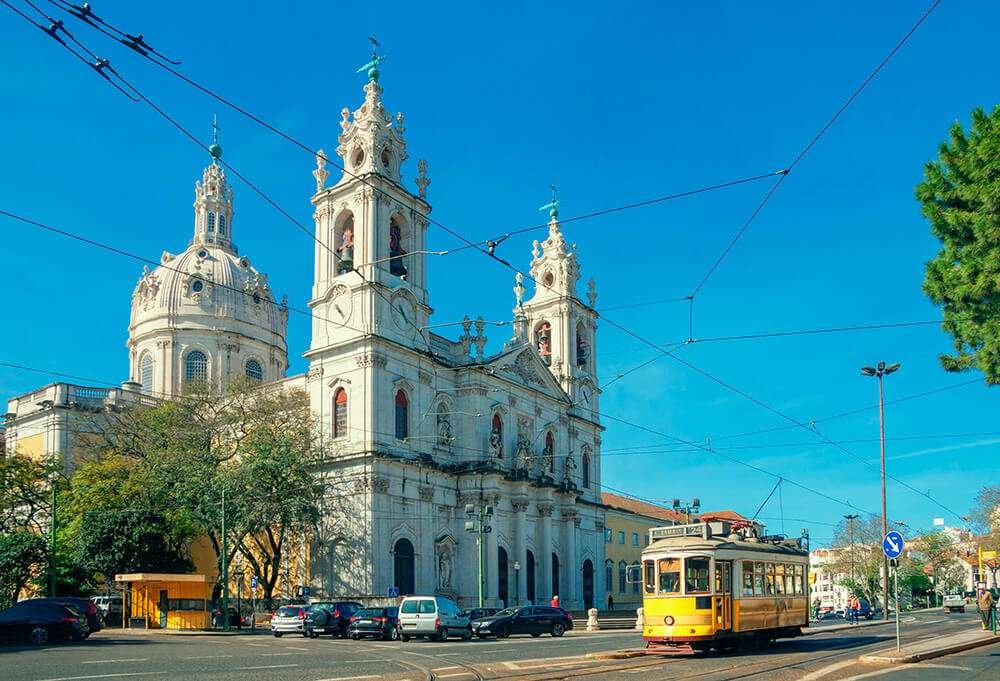
11. Estrela Basilica
The 18th century Estrela Basilica can be seen from many points in the city, as its rococo dome and twin bell towers reach into the sky. The basilica was commissioned by Queen Dona Maria I as a gift to the people on behalf of the birth of her son. Sadly, her heir died from smallpox before the basilica was completed.
Decorated with sculptures of saints and allegorical figures, murals and a 500-piece Nativity Scene, the Estrela Basilica is a beautiful work of craftsmanship. If you are looking for a fantastic view of Lisbon head to the top of the dome and visit the viewing deck.
Useful Information:
- Address: Praça da Estrela, 1200-667 Lisbon.
- As a city of hills, Lisbon offers the best views you will find. Discover some of Lisbon's most beautiful viewpoints in this article.
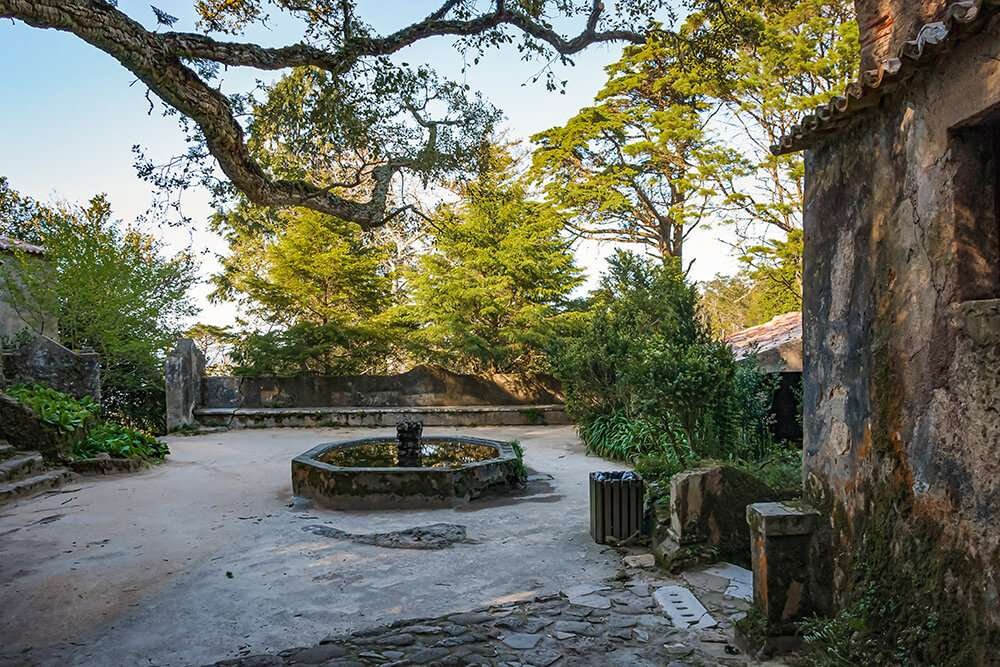
12. Convent of the Capuchos
While not located directly in Lisbon, a visit to the Convent of the Capuchos is well worth your time. Nestled into the mountains of Sintra, an entire region honored as a UNESCO World Heritage site, the convent blends in with the natural surroundings. Made of rocks and stone, the 16th century minimalist structure was built directly into the landscaping of the windblow forest on the craggy hills.
Originally occupied by eight monks, there are eight small cells as well as other repeating architectural features which represent the number of infinity. In accordance with the hillside, the rooms are constructed in ascension, inline with the belief that they are also moving closer to the heavens.
It was occupied by the monks and their religious order until such groups were banned under the change of rule in Portugal. One of the stranger stories associated with the convent is the presence of a hole-like room where a monk is believed to have lived out three decades of his life, self-committed to penance, until reaching the age of one hundred.
Useful Information:
- Address: Colares, Portugal
- A day trip to Sinta is a great way to explore the magical region just outside of Lisbon. We have created a detailed guide for Sintra and Pena Palace which explains how to get there and what to do.
This list is only the start to the many religious sites that lay within Lisbon and just outside its borders. We hope it was helpful in planning your stay in Lisbon. Leave us a comment below and let us know what you enjoyed and would recommend to others!
Lisbon is home to an incredible list of museums and cultural sites. If you are interested in visiting them, check out our related articles.
Lisbon Tours & Tickets
Discover Lisbon today with the most popular tours & tickets without standing in line.

